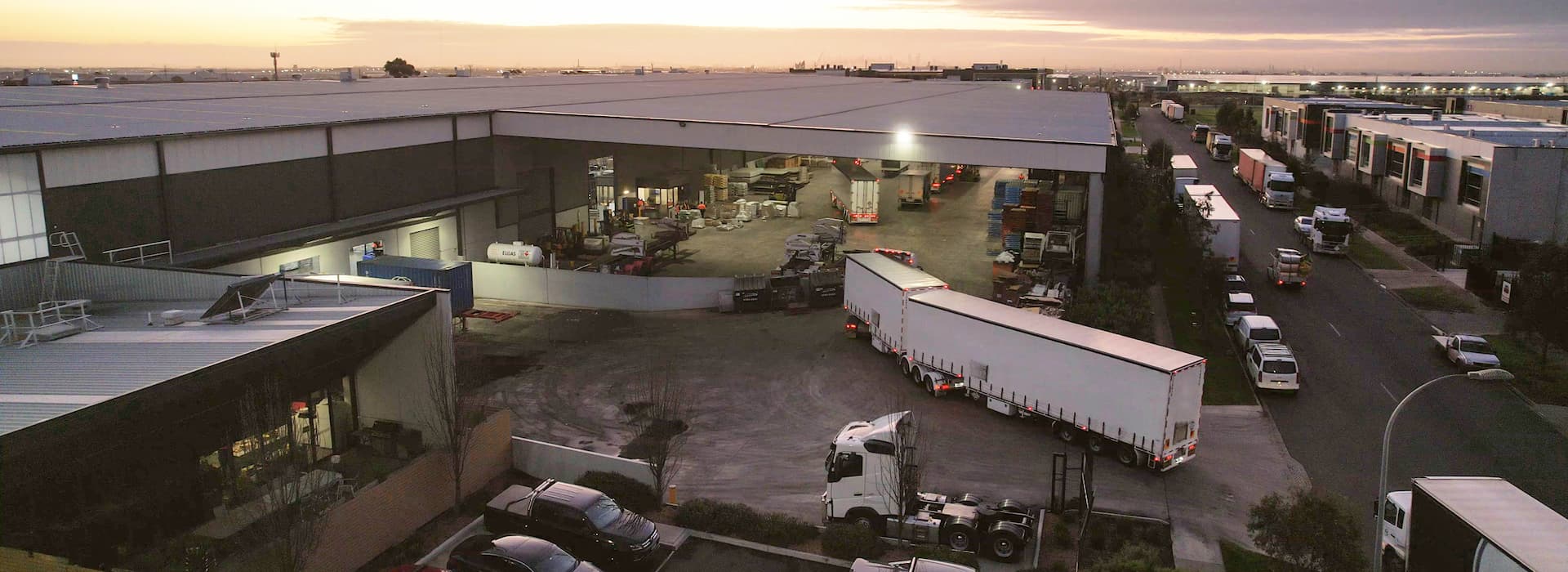In today’s fast-paced and competitive business environment, efficiency and cost-effectiveness are paramount. According to the Council of Supply Chain Management Professionals, outsourcing logistics functions to a third-party logistics (3PL) provider can offer significant advantages.
However, choosing the right 3PL partner in Melbourne and effectively managing the relationship is crucial to unlocking these benefits.
One critical aspect of successful 3PL management is continuously monitoring and evaluating key performance indicators (KPIs). These metrics provide valuable insights into various aspects of your 3PL’s performance, helping you identify areas of excellence and uncover potential improvement opportunities.
According to Murphy and Post, you can make informed decisions, optimise your supply chain operations, and maximise your return on investment by actively tracking and analysing KPIs.
There are four essential categories of KPIs you need to track for successful 3PL management:

Category 1: Operational Efficiency
As a foundation for successful 3PL management, operational efficiency ensures your orders’ smooth and timely fulfilment. By monitoring these key performance indicators, you can identify areas for improvement and optimise your supply chain for maximum effectiveness.
- On-Time Delivery Rate: This KPI measures the percentage of orders delivered within the agreed-upon timeframe. Imagine the satisfaction of customers receiving their orders on time, every time. Aim for a high on-time delivery rate (ideally above 95%) to build customer trust, eliminate costly delays, and maintain a positive brand reputation.
- Order Fulfillment Rate: This KPI tracks the percentage of orders fulfilled without picking, packing, or shipping errors. Imagine receiving your order completely and accurately. Aim for a high order fulfilment rate (ideally above 99%) to ensure efficient warehouse operations, minimise customer frustrations, and deliver a seamless experience.
- Inventory Accuracy: This KPI measures the percentage of inventory records that reflect actual physical inventory levels. Imagine having complete visibility into your inventory, knowing exactly what you have and when to reorder. Aim for a high inventory accuracy rate (ideally above 98%) to optimise inventory management, prevent costly stockouts or overstocks, and avoid production delays.
- Pick and Pack Accuracy: This KPI measures the percentage of orders without errors in picking and packaging individual items. Imagine receiving the exact items you ordered in the correct quantity and condition. Aim for a high pick and pack accuracy rate (ideally above 99.5%) to ensure timely deliveries, reduce the need for returns and corrections, and offer a high-quality customer experience.
- Warehouse Utilisation: This KPI measures the ratio of occupied space to total warehouse space. Imagine optimising your storage space and avoiding unnecessary rental costs. Aim for a high warehouse utilisation rate (between 70% and 90%) to use resources efficiently, reduce storage costs, and avoid overpaying for unused space.

Category 2: Cost Management
Managing your supply chain isn’t just about efficiency; it’s also about controlling your costs. That’s where Cost Management KPIs come in.
These metrics provide valuable insights into how your 3PL partner manages your financial resources, allowing you to identify areas for improvement and optimise your bottom line.
- Transportation Cost per Unit: This KPI measures the average cost of transporting each product unit from your supplier to your customers. Track this KPI over time to identify opportunities to negotiate better shipping rates with carriers and reduce transportation costs. Imagine finding a more cost-effective shipping option and increasing your bottom line.
- Warehousing Cost per Unit: This KPI measures the average cost of storing each product unit per day or month. Analyse this KPI to identify potential warehouse cost savings, such as improving storage space, utilising alternative storage options, or implementing automation solutions. Imagine reducing your warehousing costs per unit and freeing up resources for other investments.
- Order Processing Cost per Order: This KPI measures the average cost of processing, picking, packing, and shipping each order. Monitor this KPI to identify opportunities to streamline your order fulfilment process, automate repetitive tasks, and reduce administrative costs. Imagine streamlining your order processing and increasing operational efficiency.
- Inventory Carrying Cost: This KPI measures the cost of holding inventory, including storage, insurance, and opportunity costs. Analyse this KPI to identify opportunities to reduce inventory levels, improve cash flow, and optimise your financial resources. Imagine reducing your inventory carrying cost and freeing up valuable capital for other purposes.
- Administrative Cost per Order: This KPI measures the average cost of processing paperwork and managing administrative tasks for each order. Analyse this KPI to identify opportunities for automating administrative tasks, reducing administrative overhead, and freeing up resources for more strategic activities. Imagine automating administrative tasks and focusing on more strategic initiatives that drive business growth.

Category 3: Customer Service
Your 3PL partner is crucial in delivering a seamless and positive customer experience, fostering trust and loyalty with your customers. Here are three key KPIs to track and improve:
- Customer Satisfaction Score: This KPI measures the average score based on customer surveys or feedback regarding your 3PL’s service quality. Regularly monitor this KPI to identify areas for improvement, ensure customer satisfaction remains high, and maintain a positive brand image.
- Resolution Time for Customer Issues: This KPI measures the average time to resolve customer inquiries and complaints. Demonstrate responsiveness and prevent customer frustration by aiming for a quick resolution time (typically less than 24 hours).
- Order Tracking Accuracy: This KPI measures the percentage of orders with accurate real-time tracking information readily available. Enable proactive exception management and improve customer communication by aiming for a high order tracking accuracy rate (ideally above 99%).
Category 4: Technology and Visibility
Your 3PL partner can provide unparalleled insights, empowering you to make informed decisions and improve your operations using technology. Here are four key KPIs to assess your 3PL’s technology capabilities.
- Inventory Visibility Score: This metric assesses transparency and access to detailed inventory data across all locations, including warehouses, retail stores, and other sites. Aim for a high inventory visibility score (ideally above 80%) to empower you to make informed inventory decisions, avoid stockouts, and optimise your supply chain operations.
- Data Integration Efficiency: This metric measures the level of seamless data integration between your systems and your 3PL’s systems. Aim for efficient data integration (ideally real-time) to eliminate manual data entry, reduce errors, and optimise your supply chain operations.
- Technology Investment: This metric assesses the resources your 3PL invests in modern technologies for warehouse automation, data analytics, and automation tools. Aim for a 3PL committed to technology investment (e.g., robotics, AI, cloud-based platforms) to adapt to evolving industry trends, deliver cutting-edge solutions, and maintain a competitive edge.
- Reporting Frequency and Accuracy: This metric assesses the regularity and accuracy of performance reports provided by your 3PL. Aim for frequent (e.g., weekly or monthly) and accurate information to monitor progress, identify areas for improvement, make informed strategic decisions, and increase your supply chain performance.

Choosing the Right KPIs for Your Business
The specific KPIs you choose to track will depend on your individual business needs and priorities. Consider what aspects of your supply chain are most critical to your success, and choose KPIs that provide the most valuable insights in those areas.
Additionally, consider your resources and capabilities when selecting KPIs. Some KPIs may require more data and analysis than others, so choose metrics that you can realistically track and utilise effectively.
Developing a Custom KPI Dashboard
Once you have selected your key KPIs, create a customised dashboard to track and monitor them regularly.
This will allow you to see trends over time, identify areas for improvement, and measure the effectiveness of your 3PL partnership. You can also use your KPI dashboard to communicate performance metrics to stakeholders and decision-makers within your organisation.
Using KPIs for Continuous Improvement
Don’t just track your KPIs; use them to drive continuous improvement! Regularly review your results and identify areas where you can improve your supply chain performance.
Work with your 3PL partner to develop strategies for addressing these areas and track your progress over time. By actively using KPIs in this way, you can ensure your supply chain remains efficient, cost-effective, and responsive to your ever-changing business needs.
Conclusion
In today’s highly competitive business environment, effective 3PL management is no longer a luxury; it’s a necessity. By actively monitoring and analysing your KPIs, you can gain valuable insights into your supply chain performance and identify areas for improvement.
Successful 3PL management is an ongoing journey, not a destination. By utilising KPIs effectively, you can build a strong partnership with your 3PL provider and achieve remarkable results for your business.

